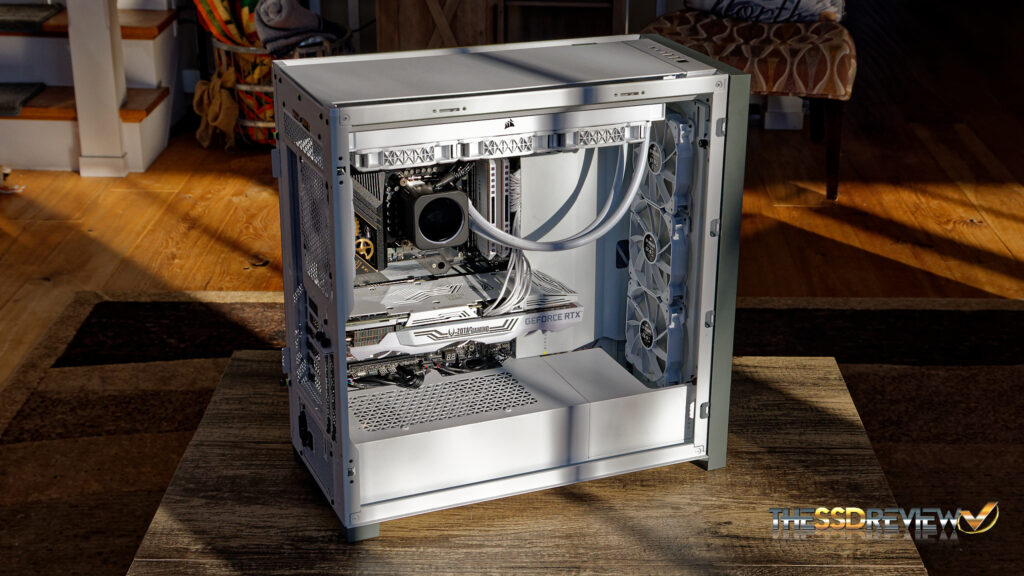PCIe 5.0 has made its stand in the PC world and is well on its way to making everything we do faster and more efficient. Considering data storage, SSD data transfer speeds now stretch above 10GB/s, but other Z790 great features include parallel ThunderBolt 4 and USB 3.2 2×2, as well as CPU speeds well above 5GHz. TBolt 3/4 brings us external storage at 3GB/s while USB 3.2 2×2 reaches 2GB/s. It wasn’t that far back that 10GB/s transfer speeds and 5GHz CPU speeds were simply a pipe dream. But here we are…in a Core i5 yet… and reaching just those speeds in a system rated by Passmark as being in the 99th percentile of systems tested to date.
Builds as such wouldn’t be possible without the help and sponsorship of many and we thank Intel and Corsair for jumping in to assist with this project. While Intel offered both 13th Generation Core i9/i5-13900K CPUs for our testing, Corsair remained dedicated to whole bench coverage by sending along a 5000D chassis, HX1000i power supply, 32GB of DDR5-5600 Dominator Platinum RGB memory, iCUE H150i Elite Capellix Liquid CPU Cooler, K70 RGB Pro Optical Gaming Keyboard, and a M65 RGB Elite White Gaming Mouse.
This system is based on the ASRock Taichi Z790 PCIe 5.0 motherboard along with our ZOTAC Gaming White Trinity RTX 3080 graphics card. This system is home to Intel’s newest Raptor Lake Core i5-13600K CPU and 32GB of Corsair DDR5-5600 memory. This is how it looks through AIDA64 v.6.85 Engineer:
As we work through the components, clicking on the title of each will bring you directly to its Amazon sale link in order to do a price check. It’s us versus the world! Let’s start with our updated Passmark Rating that has us stable at over 5GHz with the newest Core i5-13600K for the first time ever!
This is a very impressive Passmark Rating considering the CPU is only a Core i5 with an overall Passmark Rating placing this Test Bench in the top 99th percentile of all systems ever tested. This test bench did equally well in our PCMark 10 Extended BenchMark:
 The SSD Review The Worlds Dedicated SSD Education and Review Resource |
The SSD Review The Worlds Dedicated SSD Education and Review Resource | 


Hi
I’d like to see a “published date” on all your article intros.
The published date will be at the top of the article.